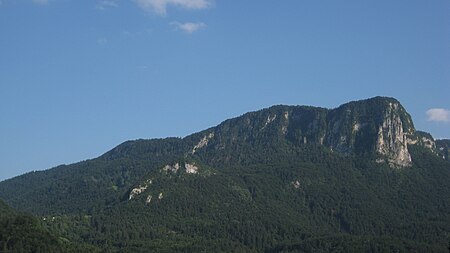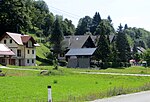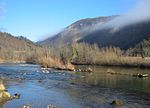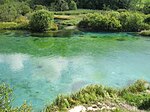Jelovica
Julian AlpsKarst plateaus of SloveniaNatura 2000 in SloveniaPlateaus in Upper CarniolaSlovenia geography stubs

Jelovica (pronounced [jɛˈlɔːʋitsa]) is a karst plateau in northwestern Slovenia. It is the easternmost part of the Julian Alps and is overgrown by spruce forest. Partisan Peak (Slovene: Partizanski vrh), originally known as Mount Kotlič, located on the southern part of the plateau, is its highest peak and reaches an elevation of 1,411 metres (4,629 ft). The northern part of the plateau has elevations up to 1,100 metres (3,600 ft). Iron ore was dug in Jelovica in the past. During World War II, Jelovica was a refuge for the Slovene Partisans. Nowadays, it is a protected area as part of the Natura 2000 network.
Excerpt from the Wikipedia article Jelovica (License: CC BY-SA 3.0, Authors, Images).Jelovica
Geographical coordinates (GPS) Address Nearby Places Show on map
Geographical coordinates (GPS)
| Latitude | Longitude |
|---|---|
| N 46.301388888889 ° | E 14.130277777778 ° |
Address
Vošče
4240
Slovenia
Open on Google Maps











